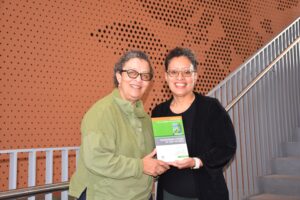
A groundbreaking study conducted by researchers at the University of California, Berkeley has revealed that a novel treatment targeting two distinct age-related pathways can extend the lifespan of frail adult male mice by up to 73 percent. This remarkable finding, however, was not observed in female mice, underscoring the complex biological differences in aging processes between sexes.
The research focused on a combination therapy that integrates two anti-aging treatments. The first is oxytocin (OT), a naturally occurring hormone and neurotransmitter known for its roles in social bonding and reproduction, as well as its ability to promote muscle growth and tissue repair. The second component is an Alk5 inhibitor (A5i), which targets the transforming growth factor beta (TGF-beta) pathway. This pathway is known to become overactive with age, leading to tissue damage and increased inflammation.
“Treatment of old frail male mice with OT+A5i resulted in a remarkable 73 percent life extension from that time, and a 14 percent increase in the overall median lifespan,” the researchers noted in their published paper.
The study involved 25-month-old mice, equivalent to 75-year-old humans. The treated male mice not only lived longer but also exhibited improvements in physical performance, blood protein levels, and short-term memory, suggesting a reversal of some age-related declines.
Exploring Sex-Based Differences in Aging
The absence of similar benefits in female mice raises questions about sex-based differences in aging. Previous studies have also noted such disparities, although the underlying causes remain elusive. The researchers observed that while the combination did not extend the lifespan of female mice, it did rejuvenate fertility when administered at late middle age.
“The causes of these sex-based differences remain unknown, albeit we note that treatment of female mice with OT+A5i at late middle-age rejuvenates fertility,” the researchers wrote.
Future studies are expected to explore the effects of administering the treatment to female mice at younger ages, potentially unlocking insights into how these therapies might be tailored to different sexes.
Implications for Human Aging
The potential application of this therapy in humans remains a subject of ongoing research. While anti-aging treatments must demonstrate efficacy, they also need to be free from significant side effects—a challenge that has plagued other promising approaches. The delicate balance of tweaking biological pathways to counteract aging without causing disruptions elsewhere in the body is a significant hurdle.
Encouragingly, oxytocin already has regulatory approval for use in inducing labor, and A5i drugs are currently being tested for cancer treatment. This existing regulatory framework could expedite the process of evaluating these compounds for anti-aging purposes.
Future Directions and Broader Impact
Despite the promising results, the path to developing a commercially viable anti-aging treatment from this drug combination is still long. However, the study provides valuable insights into the development of therapies aimed at slowing aging—a field that is becoming increasingly important as the global population ages.
“These findings establish the significant health-span extension capacity of OT+A5i and emphasize the differences in aging and in response to longevity therapeutics between the sexes,” the researchers concluded.
As research continues, the hope is that such studies will pave the way for effective interventions that can enhance health and longevity, addressing the growing demand for solutions to age-related challenges worldwide.






